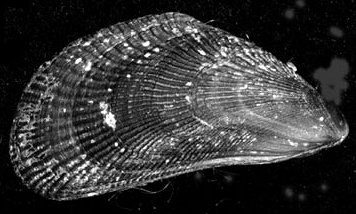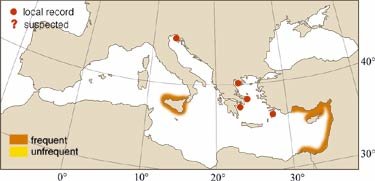
|
Relevant Synonyms
Misidentification
|
|
| photo: S. Gofas / Coll. G. Bitar |
|
SHORT
DESCRIPTION
color :
externally dark brown-black; internally tinged violet-black.
common size :
shell to 40 mm. |
DISTINGUISHING CHARACTERISTICS
BIOLOGY / ECOLOGY
habitat :
lives in shallow water (at sea level or just below) attached by its byssus to rocks and stones, mostly in clusters. |
|
1st
Mediterranean record
|

|
|
DISTRIBUTION
|
ESTABLISHMENT SUCCESS
speculated reasons for success :
|
|
|
MODE OF
INTRODUCTION |
IMPORTANCE TO
HUMANS |
|
KEY
REFERENCES
|
|
|
 Mytilus pharaonis (Fischer P., 1870) [Tillier and Bavay, 1905]
Mytilus pharaonis (Fischer P., 1870) [Tillier and Bavay, 1905]